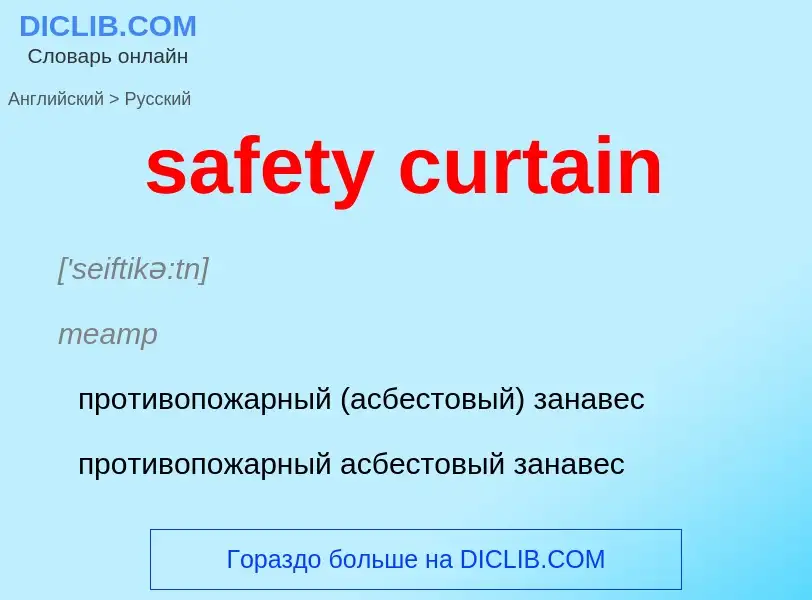Перевод и анализ слов искусственным интеллектом ChatGPT
На этой странице Вы можете получить подробный анализ слова или словосочетания, произведенный с помощью лучшей на сегодняшний день технологии искусственного интеллекта:
- как употребляется слово
- частота употребления
- используется оно чаще в устной или письменной речи
- варианты перевода слова
- примеры употребления (несколько фраз с переводом)
- этимология
safety curtain - перевод на русский
['seiftikə:tn]
театр
противопожарный (асбестовый) занавес
противопожарный асбестовый занавес
строительное дело
противопожарный занавес
противопожарный экран
Определение
Википедия

A safety curtain (or fire curtain in America) is a passive fire protection feature used in large proscenium theatres. It is usually a heavy fabric curtain located immediately behind the proscenium arch. Asbestos-based materials were originally used to manufacture the curtain, before the dangers of asbestos were widely known. The safety curtain is sometimes referred to as an iron in British theatres, regardless of the actual construction material.
Occupational safety and health regulations state that the safety curtain must be able to resist fire for a short time to delay fires starting on stage from spreading to the auditorium and the rest of the theatre, to provide additional exiting time for audience members and members of staff.
The curtain is heavy and requires its own dedicated operating mechanisms. In an emergency, the stage manager can usually pull a lever backstage which will cause the curtain to fall rapidly into position. Alternatively, heat-sensitive components can be built into the rigging to automatically close the curtain in case of fire. It may be released electronically with the activation of the building's fire alarm system. It can also be flown in and out, as regulations in some jurisdictions state that it must be shown to the audience, to prove its effective operation, for a certain amount of time during every performance.
A safety curtain is required per United States building codes if the proscenium wall is required to be fire rated. The curtain is required to demonstrate a fire rating of approximately 30 min per testing.
In the UK, it is a requirement that a safety curtain must be fully down within the proscenium opening within 30 seconds of being released.
In 1794 the Theatre Royal, Drury Lane became the first theatre to install an iron safety curtain. Several other serious fires, notably that at the Theatre Royal, Exeter in 1887, led to the introduction of safety curtains on a wider scale. Edinburgh's Royal Lyceum, built in 1883, is also credited with the "1st theatre in Britain to be fitted with an iron safety curtain".
A very early example of a safety curtain installation in the United States was at the New Fifth Avenue Theatre (New York City) which opened in 1873. Chicago's 1903 Iroquois Theatre fire resulted in over 600 deaths when the theater's safety curtain got stuck midway down, along with other structural deficiencies in the building.


